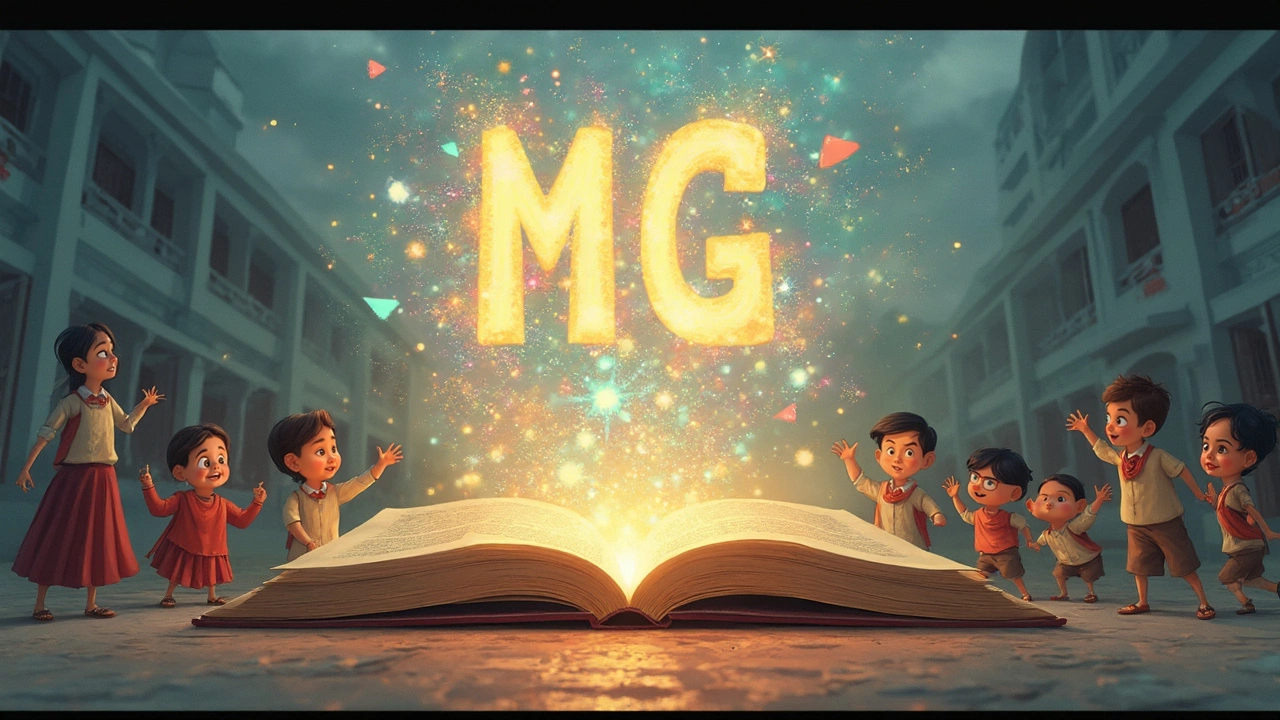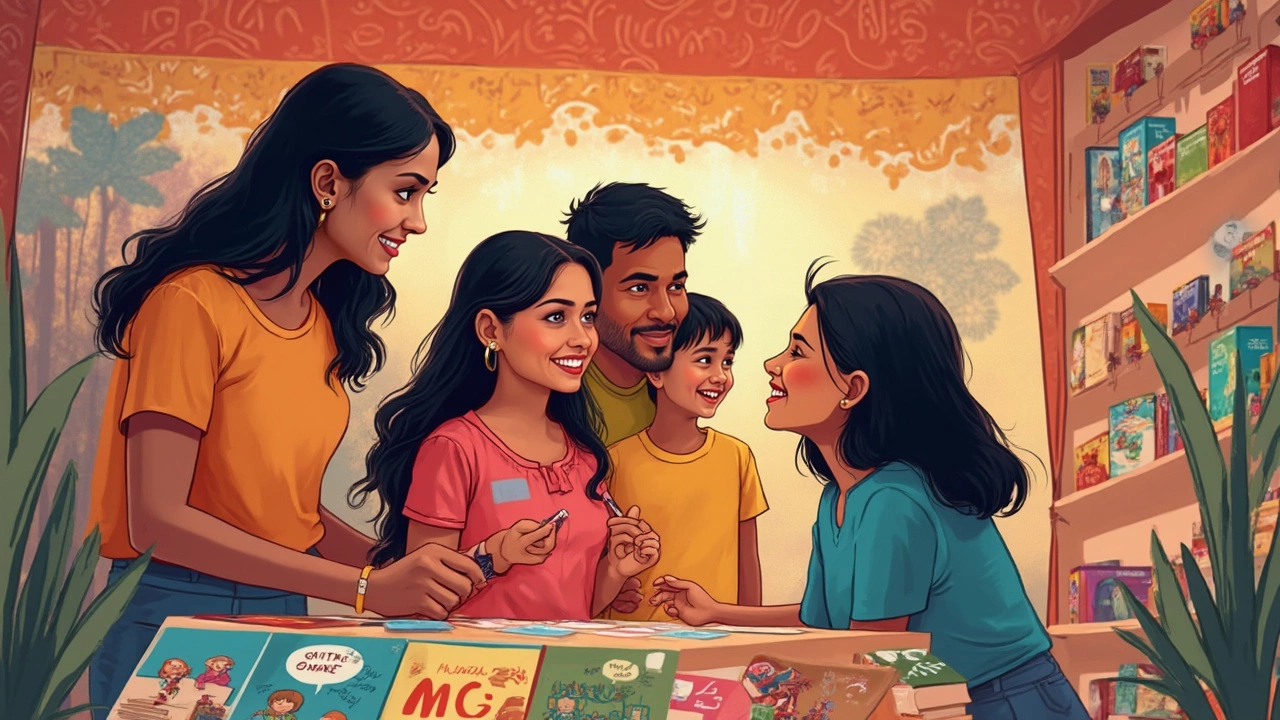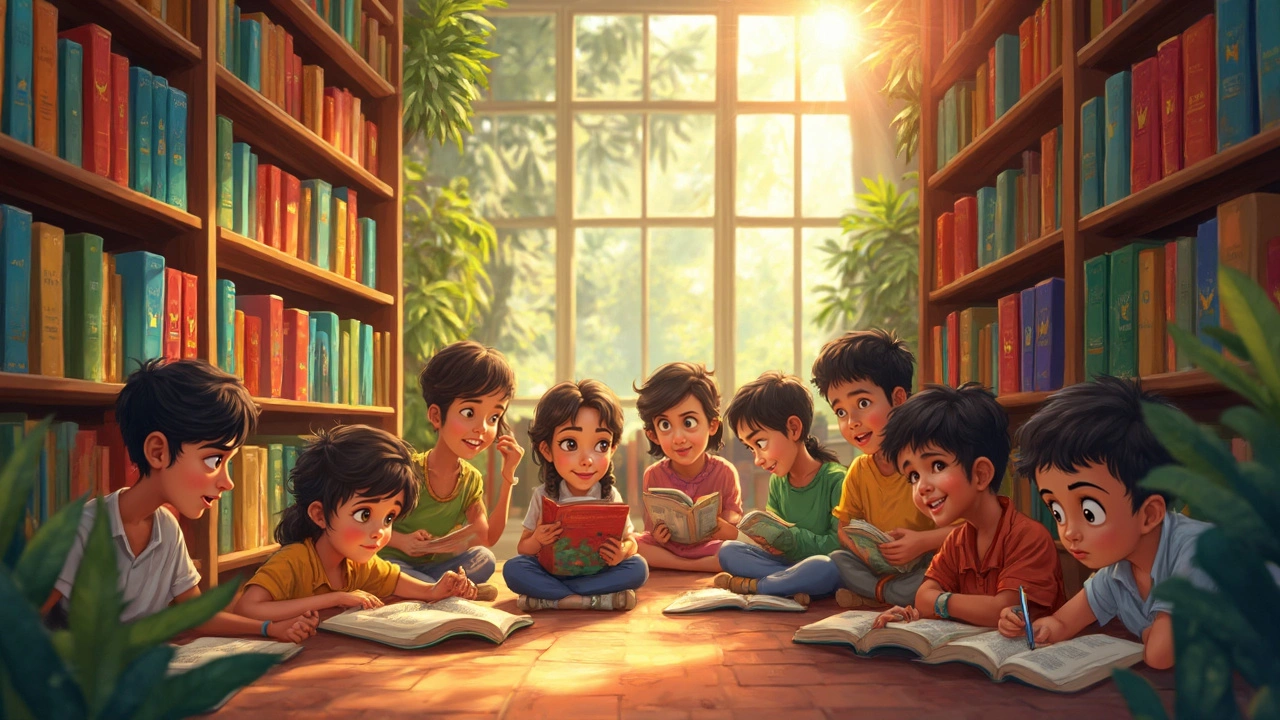Ever scanned a book review or publisher's list and stumbled on 'MG'? If you guessed it's some mysterious genre, you're not alone. The letters 'MG' simply stand for 'Middle Grade.' That's it—no secret code. But if you're not hanging out in the world of kids' and teen fiction, this can feel confusing.
In the book world, MG tells you who the book is written for: usually kids aged about 8 to 12. It's a handy shortcut, especially if you’re picking out stories for your younger siblings, students, or even your own reading stack if you like adventure and relatable struggles without all the drama and romance of teen books.
- Decoding 'MG' in Books
- How MG Differs from YA and Children's Books
- Key Traits of MG Stories
- Age Range and Who Should Read MG
- Tips for Picking Great MG Books
Decoding 'MG' in Books
So, what’s the real story behind MG? It’s book-talk for “Middle Grade,” and you’ll run into it a lot if you’re browsing shelves that aren’t clearly marked as kids or teen sections. MG is a publishing term—kind of like a fast pass to help bookstores, librarians, and parents know which stories fit that 8 to 12 age spot.
Here’s a quick look at where MG falls in the world of books:
| Category | Target Age | Typical Themes |
|---|---|---|
| Children's | 5-8 | Simple adventure, early friendships, family |
| Middle Grade (MG) | 8-12 | Growing up, belonging, personal discovery, secrets |
| Young Adult (YA) | 12+ | Romance, identity, complex issues, rebellion |
The thing about MG books? They don’t dumb things down for kids, but they’re not as heavy as YA. Publishers Weekly says,
"Middle grade is where the love of reading is often cemented. These books help kids explore the world, usually through curious protagonists figuring out where they fit."
Makes sense, right? MG fills that gap between learning to read and reading about serious teen angst. While the main characters are typically aged around 10 or 11, anyone in that age range (and honestly, quite a few adults) dig these stories because of the fresh adventures and honest emotions.
Next time you’re browsing, spotting an MG label is basically shorthand for stories that keep it real—exciting but not overwhelming, smart but not preachy, and loaded with possibilities for their intended crew of readers.
How MG Differs from YA and Children's Books
If you’re trying to pick out the right book, you need to know the gap between ‘middle grade’ (MG), children’s books, and YA (young adult). The main difference comes down to age range, story content, and even the way these stories are told.
Let’s break it down so it’s easy to follow:
- MG books target 8-12-year-olds. Characters are usually in this age range, dealing with problems like school, friendships, and family.
- Children’s books (sometimes called ‘chapter books’ or ‘early readers’) are for younger kids, about 6-8 years old. These books use simple words, lots of pictures, and very short chapters.
- YA books go the other direction—most readers (and characters) are teenagers, 13 to 18. You’ll spot more complex themes, romance, and drama here, and the writing style is more mature.
Check out this quick comparison:
| Category | Reader Age | Main Character Age | Common Themes | Page Count |
|---|---|---|---|---|
| Children's | 6-8 | 6-8 | Friendship, family, simple adventures | 40–120 |
| MG | 8-12 | 8-12 | School, friendships, identity, small risks | 30,000–50,000 words |
| YA | 13-18 | 14-18 | Romance, independence, big personal growth | 50,000–100,000 words |
The big thing with MG books is that they focus more on friendships than crushes. You won’t see heavy romantic scenes or gritty violence. There might be tough topics—grief, bullying, feeling left out—but the writing steers clear of anything too intense for tweens.
If you’re writing, selling, or buying a book, keep an eye on that main character’s age. Publishers usually want that to line up with the audience. So, if the main character is 13+, it’s probably YA, even if the story feels pretty tame.

Key Traits of MG Stories
When someone says a book is 'MG,' they’re talking about stories with a certain flavor—geared right at those upper-elementary to early middle school readers. The most obvious thing you’ll spot is the age of the main characters: they’re usually somewhere between 10 and 13 years old. You won’t find high school seniors or toddlers in the spotlight. It’s all about that in-between age where you’re old enough to crave adventure but not quite ready for solving adult dramas.
Plot-wise, most MG books dive into the kinds of challenges and changes real kids are facing—making new friends, dealing with school stuff, figuring out family problems, and sometimes biting their nails over a secret mission or magic curse. But the drama is kept at a level that’s exciting, not overwhelming. Romance might pop up, but it’s definitely not the star of the show like in a young adult novel. Think crushes, not love triangles.
Language is another big thing. MG books use simple sentence structure and vocabulary, but they never talk down to the reader. They’re easy to follow but still clever and funny. The stories avoid graphic violence, swearing, or anything too scary. It’s suspense and action, but everyone can sleep with the lights off.
If you flip through popular MG series like “Percy Jackson & the Olympians,” “Harry Potter” (the earlier books), or “Diary of a Wimpy Kid,” you’ll notice the humor, adventure, and lots of quirky sidekicks. Illustrations are common, too, especially in series aimed at the lower end of the age group. And here's a neat insider fact: MG books usually land between 30,000 and 50,000 words, so they’re an easy weekend binge.
Most important: MG stories are about empowering kids. The main characters are often the ones driving the action and solving problems, not just adults swooping in to save the day. That’s why these books aren’t just entertaining—they’re confidence boosters for young readers.
Age Range and Who Should Read MG
If you want to get down to the numbers, most publishers say MG or middle grade books are aimed at kids between 8 and 12 years old. You’ll often see this range listed on the book jacket, inside the library catalog, or on bookstore tags. But the lines aren’t set in stone—some 7-year-olds gobble up MG stories, and many 13-year-olds aren’t quite ready for the themes in YA (young adult).
So how do you know if a book fits? Check out this simple cheat-sheet:
- Characters: Usually, the main kid is 10-13. If you see high schoolers, you’re headed toward YA territory.
- Themes: MG books tackle friendships, family, growing up, and sometimes a little danger, but nothing too intense or graphic. Don’t expect a lot of romance or dark topics.
- Language: The vocabulary stays friendly for middle schoolers, but it won’t feel dumbed down.
Here’s a quick look comparing typical target ages for popular book categories:
| Category | Recommended Age | Main Character Age |
|---|---|---|
| Children's (Chapter Books) | 6–8 | 7–10 |
| MG (Middle Grade) | 8–12 | 10–13 |
| YA (Young Adult) | 12–18 | 14–18 |
Sometimes grown-ups—teachers, parents, and librarians—dive into MG to check books first for younger readers, or just because the stories are fun and fast-paced. Don’t be surprised if you see adults grabbing MG bestsellers like "Percy Jackson" or "Wonder." Just remember, if you want heart and adventure without the PG-13 issues of older teen books, MG is a safe bet. It hits the sweet spot for curious tweens but doesn’t leave anyone out if you’re a little younger or older.

Tips for Picking Great MG Books
Choosing the right MG book doesn’t have to be a guessing game. A few simple tips can help you spot stories that will actually keep readers interested, not sighing from boredom after chapter two.
- Check the age range: Most MG books are written for ages 8 to 12, but not every book fits every reader. Take a peek at the publisher’s recommended age or ask a librarian if you're not sure.
- Look for engaging main characters: In MG, the hero is usually around the same age as the reader. If the main character is 10, chances are it’ll be a hit for a 10-year-old.
- Pay attention to themes: Great MG often deals with real stuff like friendship troubles, school, and adventure—not complicated romance or super dark topics you see more in YA books.
- Notice the writing style: MG books use clear language, but don’t talk down to readers. Try reading the first page—if it grabs you or the reader right away, you’re probably in the right place.
- Series vs. Standalone: If the reader likes sticking with familiar characters, look for series like "Percy Jackson" or "Diary of a Wimpy Kid." If they like new adventures every time, go for standalones.
Here's a handy chart with top middle grade recommendations and why they're so popular:
| Book Title | Author | Why It's Awesome |
|---|---|---|
| Harry Potter and the Sorcerer's Stone | J.K. Rowling | Whisked millions of kids into a magical world with relatable friendships and school drama. |
| Percy Jackson & The Olympians: The Lightning Thief | Rick Riordan | Combines mythology with modern jokes and fast-paced action. |
| Wonder | R.J. Palacio | Deals with kindness and fitting in, without being cheesy or fake. |
| Because of Winn-Dixie | Kate DiCamillo | Shows how friendships and pets can totally change your world. |
If you still aren't sure what to pick, local librarians and teachers are goldmines for suggestions—they see what actually gets checked out and loved. Or just ask the kid! Book covers and back blurbs are fair game too. You'd be surprised how often a cool cover is all it takes to get someone to read.

